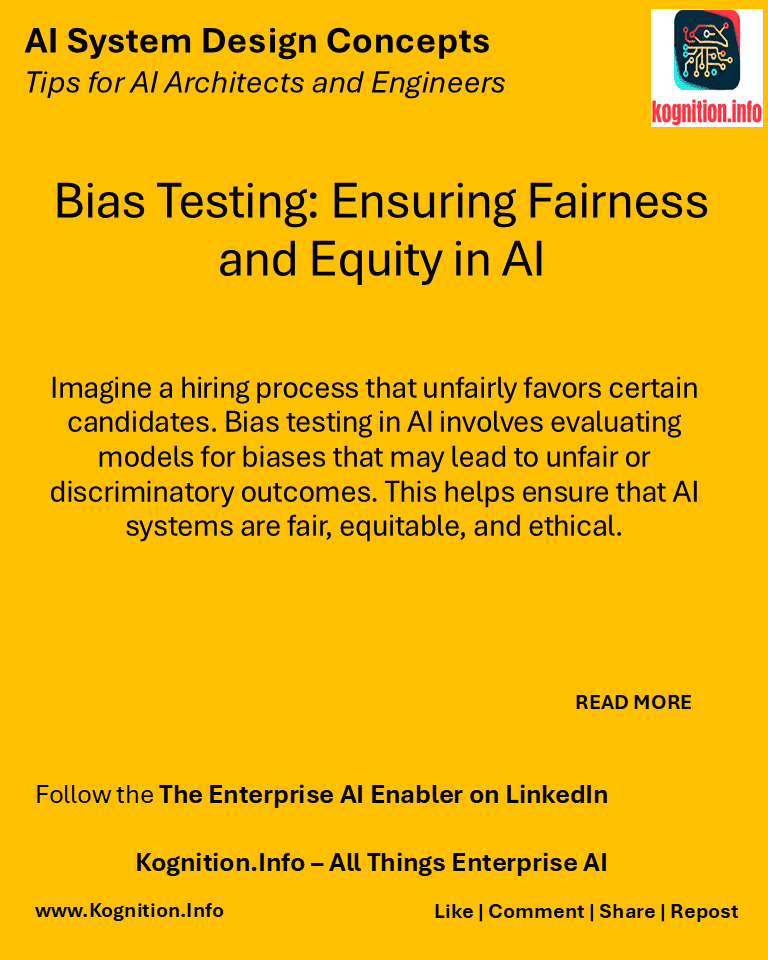
Imagine a hiring process that unfairly favors certain candidates. Bias testing in AI involves evaluating models for biases that may lead to unfair or discriminatory outcomes. This helps ensure that AI systems are fair, equitable, and ethical.
Use cases:
- Identifying bias in predictions: Detecting if a model makes systematically different predictions for different groups of people.
- Evaluating fairness metrics: Measuring fairness using metrics like disparate impact, equal opportunity, or demographic parity.
- Mitigating bias: Implementing techniques to reduce or eliminate bias in model predictions.
How?
- Define protected attributes: Identify sensitive attributes (e.g., race, gender, age) that should not be used for discriminatory decision-making.
- Collect diverse data: Ensure your training and testing data represent the diversity of the population your model will serve.
- Utilize bias detection tools: Employ tools and techniques to identify potential biases in model predictions or data.
- Mitigate bias: Implement techniques like data augmentation, fairness constraints, or adversarial debiasing to reduce bias.
Benefits:
- Fairness and equity: Promotes fairness and reduces discrimination in AI systems.
- Ethical AI: Ensures that AI systems are developed and deployed responsibly.
- Increased trust: Builds trust in AI systems by demonstrating a commitment to fairness and ethical considerations.
Potential pitfalls:
- Defining bias: Defining and measuring bias can be complex and context-dependent.
- Data limitations: Limited or biased data can hinder bias detection and mitigation efforts.
- Unintended consequences: Mitigating bias can sometimes lead to unintended consequences or trade-offs with other performance metrics.
